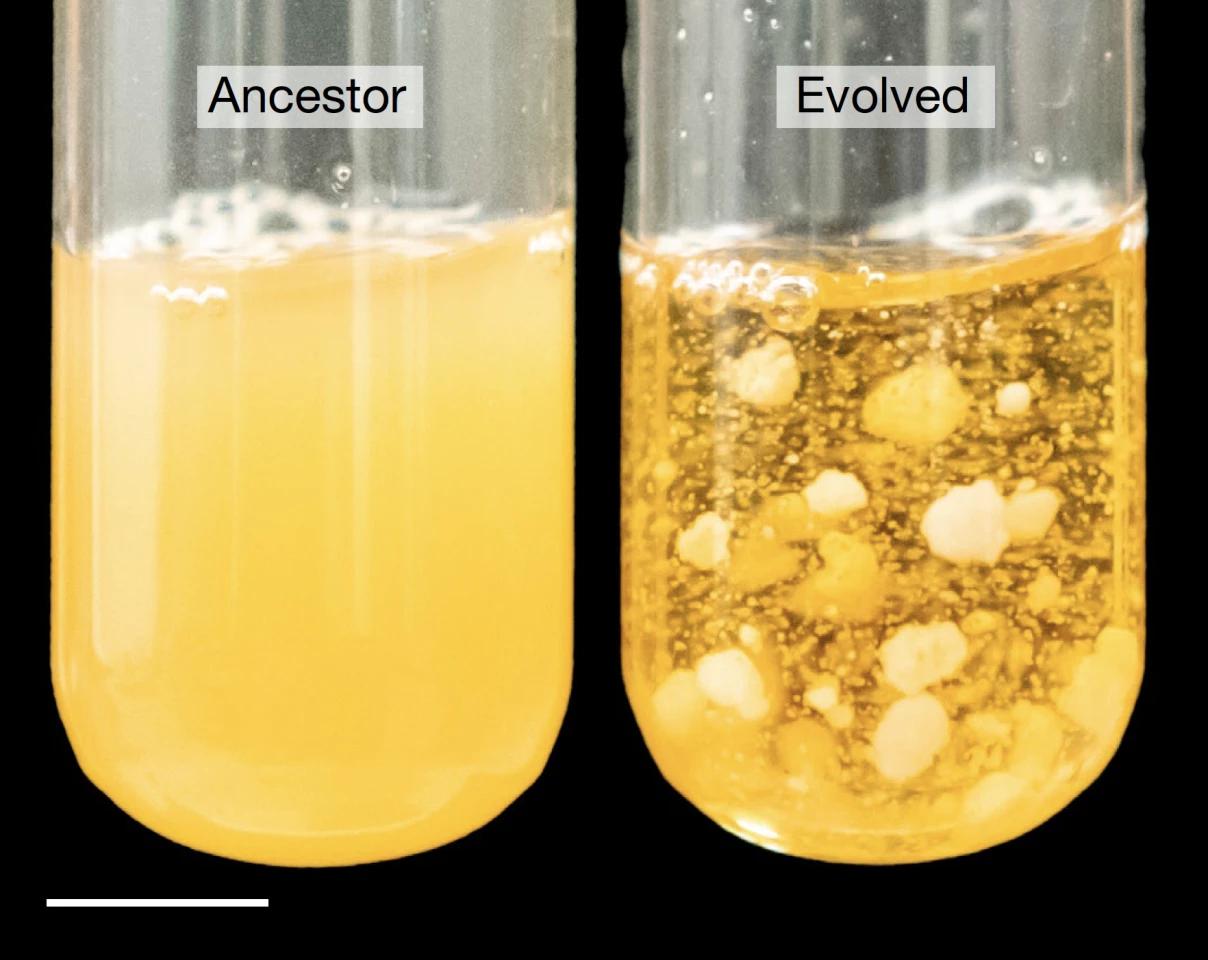Scientists are conducting a long-term experiment on evolution in the lab, to investigate how single-celled organisms could evolve into multicellular lifeforms. After thousands of generations, their yeast grew 20,000 times bigger and 10,000 times tougher.
The idea of an evolutionary “missing link” usually conjures images of a hairy ape-like hominid, but there are actually much more profound missing links in the chain. One of the biggest gaps sits between single-celled and multicellular organisms, which marks a key step in the development of complex life on Earth.
Now, scientists from Georgia Tech have reported the first results of an experiment that they hope to continue running for decades, with a pretty lofty goal – evolving single-celled lifeforms into brand new multicellular lifeforms. Directed evolution experiments have been conducted for decades, even winning the Nobel Prize for Chemistry in 2018, but those are usually focused on making new drugs or solving other problems, not plugging holes in our distant family tree.
In this first phase of this Multicellularity Long-Term Evolution Experiment (MuLTEE), the researchers started with a species called snowflake yeast. The microbes were grown in shaking incubators, and every day the team would engage in a spot of artificial natural selection – colonies that had grown the fastest and reached the biggest sizes were selected for further cultivation. Repeat this process thousands of times over, and you’ve got a pretty good approximation of the environmental forces that favor certain characteristics in natural evolution.
And sure enough, after about 3,000 generations, the yeast had evolved to form clusters of more than 500,000 cells – more than 20,000 times larger than the original strain. In the process they’d become visible to the naked eye, and had become around 10,000 times tougher, on par with wood.

The scientists investigated closer to find out what had happened on the cellular level to grant them such impressive progress. They found that the individual yeast cells had all stretched out, which reduced the density of cells in each group and as such, reduced the stress that they put on each other. This keeps the clusters from fracturing like they normally would at a certain density, allowing them to grow bigger.
But this mechanism alone shouldn’t have resulted in such a dramatic increase, the team says. So they looked even closer, using a scanning electron microscope.
“We discovered that there was a totally new physical mechanism that allowed the groups to grow to this very, very large size,” said Ozan Bozdag, first author of the study. “The branches of the yeast had become entangled – the cluster cells evolved vine-like behavior, wrapping around each other and strengthening the entire structure.”
While the “evolved” yeast still lacks many of the biological features of truly multicellular organisms, this cellular entanglement seems to be a milestone on the road to that end. The experiment is far from over too, so further developments are likely on the way.
The research was published in the journal Nature.
Source: Georgia Tech






